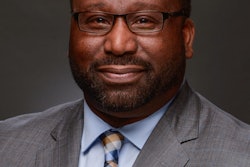Clinton Joins Waters To Address ‘Digital Divide’
WASHINGTON — African Americans and Hispanics are less likely than Whites to get connected to the Internet, and Rep. Maxine Waters, D-Calif., with help from President Clinton, is doing something about it.
With Waters’ help, the White House is requesting $100 million in fiscal 2001 for community technology centers that would address this digital divide between the connected and unconnected. Waters helped design a small national pilot program funded at $10 million last year, though the new White House recommendation would greatly expand aid.
Under the program, these technology centers could open in community centers, public housing facilities, libraries and other appropriate settings. Waters says she pushed for the program after recognizing a great digital divide in her own state, between technology-rich northern California — including the Silicon Valley — and low-income areas in the south.
“We cannot afford to leave behind any of our children in this information age. Failure to bridge the gap will relegate our sons and daughters to sit in the backseat of the technology train on the information superhighway,” she says.
Overall, 14 percent of African Americans and 13 percent of Hispanics have computers at home, compared with 30 percent of Whites. Only 5 percent of classrooms with a large number of minority students are wired for the Internet, she says, and schools in high-minority areas are three times less likely to be connected than predominantly White schools.
“These figures bring home the stark reality that our children are not being prepared to compete in the increasingly technology-based economy,” Waters adds.
The president’s $100 million plan now goes to Congress, where Republican leaders would have to agree to the proposal.
Army Plan Puts Education Before Service
WASHINGTON — The Army launched two education programs last month aimed at boosting recruitment by offering prospects help in getting the equivalent of a high school degree or going to a community college before active duty.
The new incentives can bring “motivated young men and women back into the world of learning and the world of success,” says U.S. Sec. of Education Richard W. Riley, who endorsed both programs.
One program, College Plus, offers $150 a month or reserve training pay, depending on where they enlist, to recruits who want to complete a community college degree before serving. As part of the test, reserve service will be mandatory at some enlistment centers.
The other, GED Plus, offers non-graduates help in getting a General Equivalency Diploma — which is considered equal to a high school degree — before they serve.
The Army has had difficulty selling the graduate equivalency program to the Pentagon because other military services are reluctant to use any incentive that might decrease the quality of recruits.
But Army Sec. Louis Caldera and retired Gen. Colin Powell, who also endorsed the plans, insist that won’t happen because recruits will still have to qualify through strict screening and will go on active duty only when they have the equivalent of a degree.
“We should have no fear that in any way are we going to lower the standards of the U.S. Army,” said Powell at a Pentagon news conference.
The program is the latest in a number of moves Army officials have initiated in order to boost sagging recruitment and help soldiers obtain a higher education. In November, they announced a similar initiative, which allowed buck privates earn a two-year degree over the Internet (see Black Issues, Dec. 23, 1999).
In a reverse of the GI bill, which rewards service with help in education, the latest proposal offers education up front as an incentive for enlistment — something previously offered mainly to officer candidates.
Caldera, outlining the plans, says officials expect to add about 500 recruits a month, which is just about exactly the shortfall the Army had in meeting its recruiting goal last year. Its expected to cost about $6 million a year, including $100 per non-graduate recruit and $150 a month for those to be helped through a two-year college course.
ETS Study: College the Better Path for 2 of 3 Welfare Recipients
WASHINGTON — The federal government could do a better job of providing access to higher education for people on welfare, says a new report by the Educational Testing Services.
The report, which also is critical of the skills training provided welfare recipients, places the blame with state governments. It suggests that the welfare-reform laws that were passed in 1996 — which have reduced the rolls from 4.4 million to 2.7 million — have led to low-paying, dead-end jobs for many.
“The goal of work-first has largely been accomplished. In 1998 alone, an estimated 1.5 million people who were on welfare in 1997 joined the ranks of working Americans. The success in achieving work-first has surprised even the most skeptical observers. However, the goal of making work pay is proving far more elusive,” the report states.
“For the average woman leaving welfare and still struggling to support her children with a job that pays less than $7 an hour, the promise of welfare reform has yet to be realized,” the report’s authors assert.
ETS began the survey prior to enactment of the 1996 law. It grouped people on welfare into three categories: advanced skills, basic skills and minimal skills. The report says those with minimal skills are “at least two years from being able to do work even in the most forgiving community college.”
For those welfare recipients, the report acknowledges that it might be best to steer them along the job path. But it also says that if that strategy is applied to everyone, it could deny the opportunity to get beyond the dead-end jobs.
“A better solution for these families [in the other two skill groups] is making work pay — in the true sense — by using short-term, targeted education and training to help them raise their earnings,” the report advises.
The report, A Piece of the Puzzle: How States Can Use Education to make Work Pay for Welfare Recipients, may be ordered at no cost from ETS by calling (609) 734-1200.
© Copyright 2005 by DiverseEducation.com


















